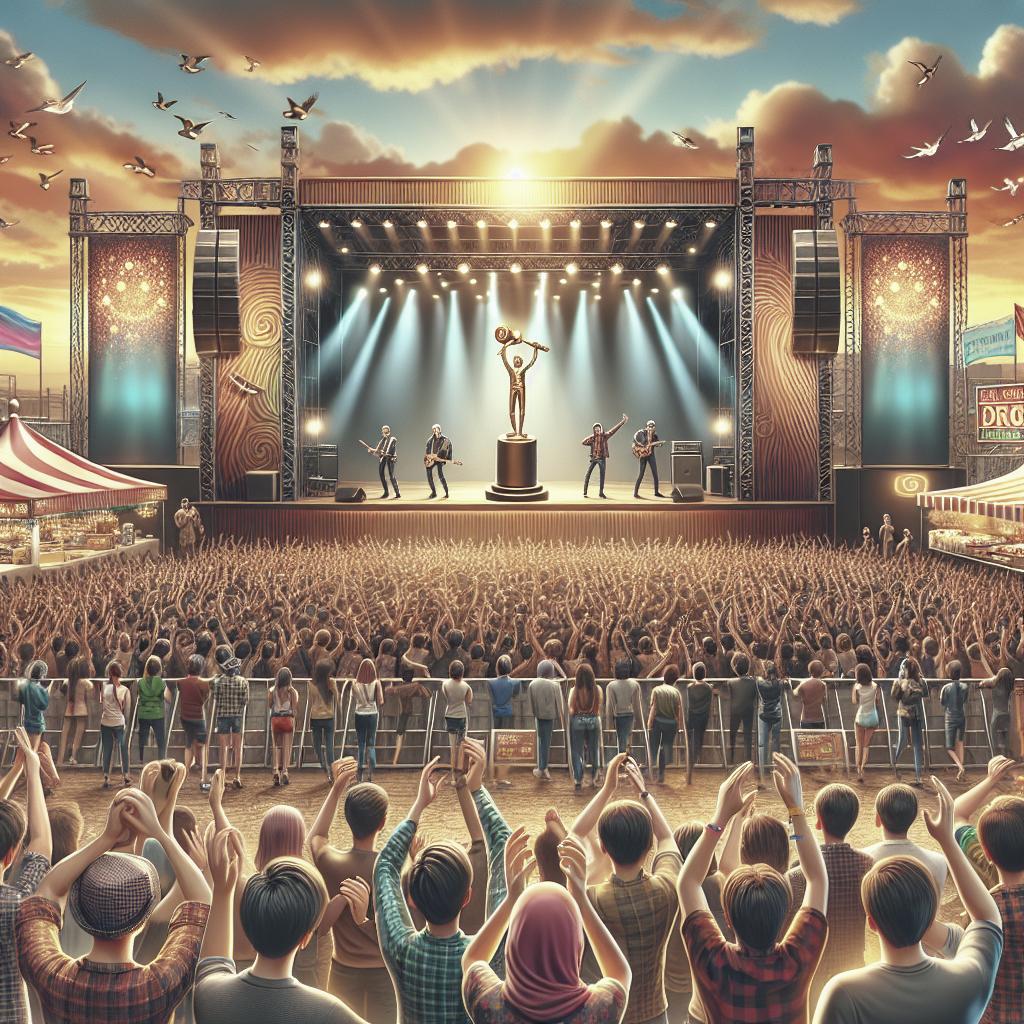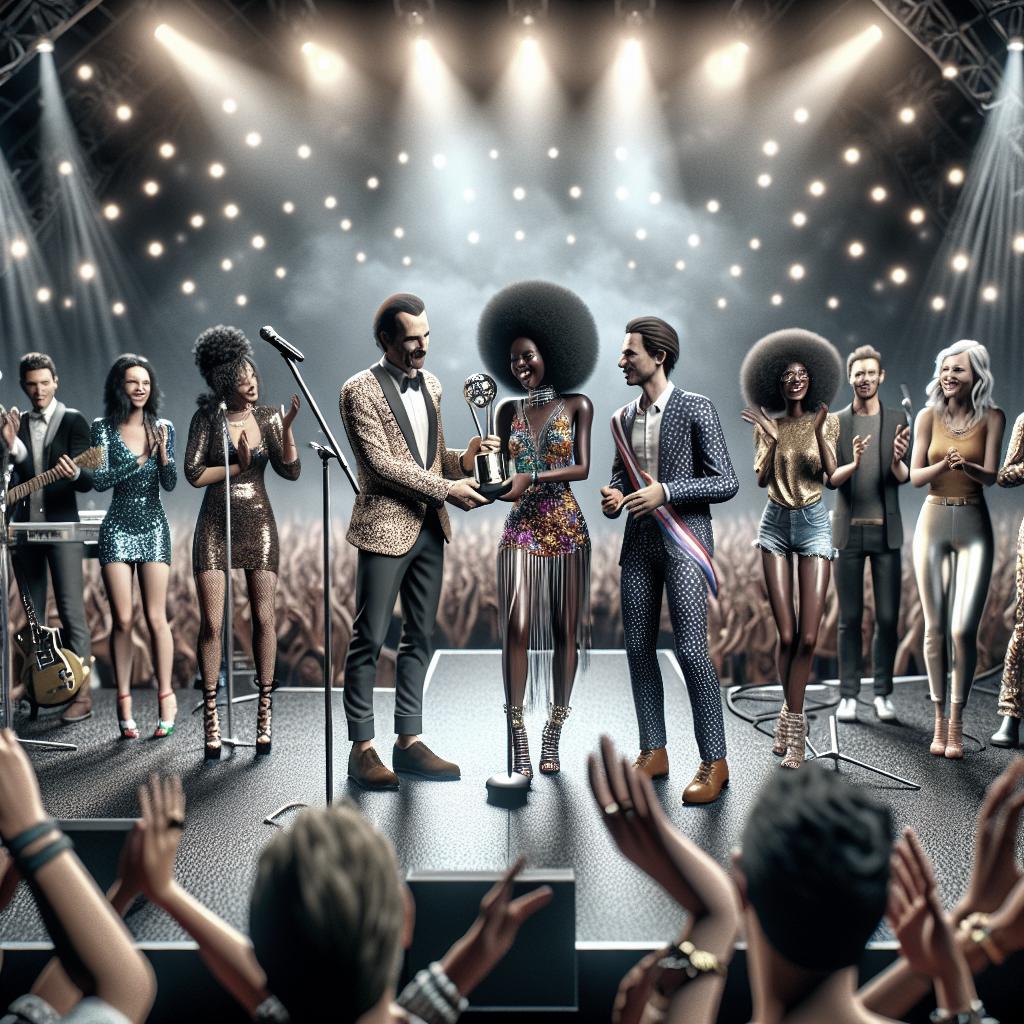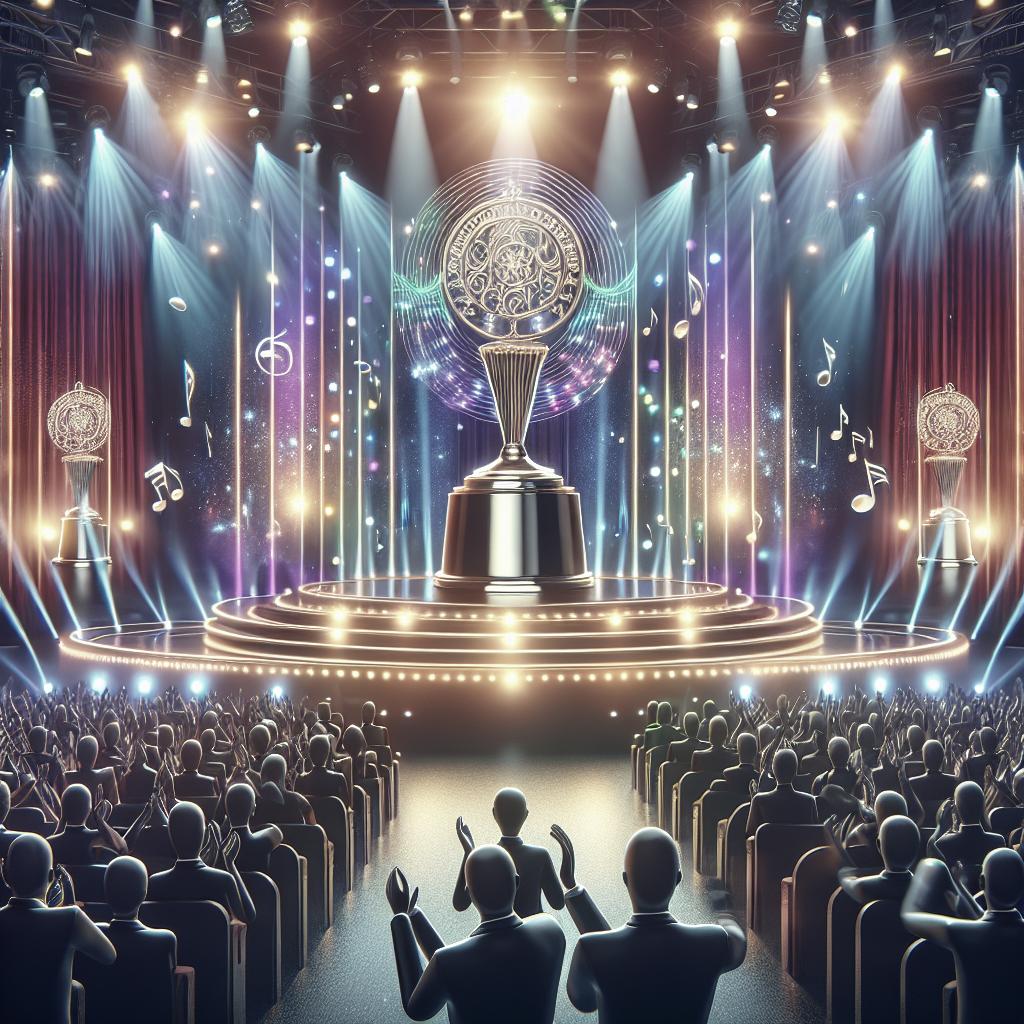<>
Music festivals have long been a significant cultural phenomenon, drawing people together to celebrate art, community, and unforgettable live performances. But beyond the joy and excitement, some festivals stand out for rewarding the best stage performances, either through accolades, heightened media attention, or a place in history. This blog post explores standout festivals and concerts across the globe that have notably recognized exceptional stage performances. We’ll journey from Austin’s vibrant SXSW to iconic charitable concerts like Live Aid and Farm Aid, each holding a special place in musical and cultural history. Join us as we delve into what makes these events memorable and the milestones they’ve set in rewarding stage excellence.
1. SXSW | Austin, TX
South by Southwest (SXSW) in Austin, Texas, is a mecca for music, film, and interactive media enthusiasts. First established in 1987, SXSW has grown into one of the most significant and influential festivals in the world. Artists often see their careers take off after a standout performance at SXSW, thanks to its reputation as a launchpad for new talent. What sets SXSW apart in rewarding stage performances is its comprehensive review system. Performers are often evaluated by peers, critics, and festival-goers. The media attention and buzz generated at SXSW can lead to record deals, sponsorships, and widespread recognition. The festival doesn’t just provide a stage; it offers a career-changing opportunity for the most exceptional performances.
What Is Music Therapy? Types, Benefits & More
Although directly unrelated to festivals, music therapy parallels the transformative power of live performances. Music therapy involves using musical elements to promote mental and physical health, benefiting individuals across varied settings. This practice reaffirms how live performances, including those celebrated at festivals, offer therapeutic and emotional relief, underscoring the importance of stellar performances. Different types of music therapy include cognitive-behavioral music therapy, where musical interventions help modify thought processes and behaviors, and psychodynamic music therapy, focusing on emotional expression through music. In essence, exceptional live performances often touch on these therapeutic aspects, enriching the audience’s experience and emphasizing the performer’s impact.
Concert For Bangladesh: Madison Square Gardens, New York City (1971)
The Concert for Bangladesh was a groundbreaking event in many ways. Organized by George Harrison and Ravi Shankar, it was one of the first major humanitarian concerts. This event paved the way for music as a vehicle for social change and underscored the power of live performances to raise awareness and funds for critical global issues. The concert brought together an impressive lineup, including Bob Dylan, Eric Clapton, and Ringo Starr, among others. It set a precedent for future benefit concerts and solidified the notion that exceptional performances could transcend entertainment and lead to real-world impacts. Performers were not only rewarded with accolades but also with the knowledge that their art made a difference.
‘You Are What You Is’: Frank Zappa’s Savagely Satirical Pop Masterclass
Frank Zappa’s ‘You Are What You Is’ concert was a demonstration of satirical brilliance. Zappa’s work often defied conventional boundaries, making his live performances much-anticipated events. This concert, in particular, showcased his talent for blending humor, wit, and biting social commentary, earning widespread acclaim. The concert’s reward lies in its lasting influence. Zappa’s performance style and the themes he explored influenced many artists across genres. The audience’s reaction—an intersection of bewilderment and admiration—highlighted how live performances could challenge societal norms and provoke thought, proving that rewards could take many forms, including lasting artistic influence.
‘Aja’: Steely Dan Hit The Sweet Spot, And The Grammy Hall Of Fame
Steely Dan’s ‘Aja’ album marked a high point in their career, and performances from this era were nothing short of legendary. The intricate melodies and complex arrangements defined their concerts, rewarding them with a Grammy Hall of Fame induction. Their live performances were celebrated for their meticulousness and musical sophistication, standing out in the crowded landscape of live music. Concertgoers were treated to flawless renditions of intricate songs, proving that precision and perfection in live settings could captivate audiences. Steely Dan’s performance during the ‘Aja’ period showcased how live musical prowess could elevate a band’s status and earn them a permanent place in music history.
‘Idlewild South’: How Allman Brothers Band’s Solidified Southern Rock
The Allman Brothers Band’s ‘Idlewild South’ album performances represented a pivotal moment in the Southern Rock genre. Their live shows were famous for their energy, improvisation, and the incredible chemistry among band members, which brought songs to life in ways the studio versions couldn’t capture. Rewarded with widespread acclaim and a loyal fan base, the Allman Brothers’ performances became legendary. The band’s live sessions have often been used as a benchmark for quality stage performances, illustrating how a band could define a genre through sheer stage presence and musical dexterity.
The Secret Policeman’s Ball (1976-2008)
The Secret Policeman’s Ball is a series of benefit shows founded in 1976 to support Amnesty International. Known for a blend of comedy, music, and activism, these events have rewarded performers not just with applause but with a platform for advocacy and social contribution. Renowned artists such as Sting, Bono, and Peter Gabriel partook in these performances, using their stature to bring attention to human rights issues. The Secret Policeman’s Ball underscored the rewarding nature of performances that fuse art with activism, making these events memorable for their impact both on and off the stage.
Rock Against Racism Carnival, Victoria Park, London (1978)
Rock Against Racism (RAR) Carnival held in Victoria Park was more than just a music festival; it was a statement against racial intolerance. This massive event brought together scores of bands and performers, uniting them with a common cause, which in itself was a significant reward. The carnival featured acts like The Clash and Steel Pulse, who delivered powerful performances that resonated deeply with the audience. These performances rewarded artists with an enhanced sense of purpose and a direct impact on social issues, cementing the role of music festivals in cultural and societal transformation.
Concerts For The People Of Kampuchea, London, December (1979)
Organized by Paul McCartney and Kurt Waldheim, the Concerts for the People of Kampuchea were held to alleviate the suffering in Cambodia. Featuring prominent bands like Queen, The Who, and Wings, these concerts represented a collective effort where performers used their talents for a greater good. Performers were rewarded with an enlarged fan base and a renewed sense of their music’s potential to effect change. The concerts demonstrated that exceptional live performances could serve humanitarian purposes, bridging gaps between entertainment and philanthropy in impactful ways.
Live Aid, Wembley Stadium, London / JFK Stadium, Philadelphia (1985)
Live Aid is often considered one of the most monumental concerts in history. Organized by Bob Geldof and Midge Ure, this dual-venue event aimed to raise funds for the Ethiopian famine, featuring a legendary lineup that included Queen, U2, and Led Zeppelin. The sheer scale of Live Aid meant that performers were rewarded with unprecedented global exposure. Queen’s set, notably, went down in history as one of the greatest live performances ever. The concert’s success revealed the immense power live music holds in driving social change and the significant rewards that come from participating in such legendary events.
Farm Aid, Memorial Stadium, Champaign, Illinois (1985)
Farm Aid was conceived by Willie Nelson, John Mellencamp, and Neil Young to support struggling American farmers. The inaugural concert in 1985 featured an impressive roster of musicians, from Bob Dylan to B.B. King, aiming to raise funds and awareness for family farms. The rewards for performers at Farm Aid extended beyond financial contributions. Artists experienced the direct impact of their involvement through the gratitude of farmers and their communities. The festival persisted over the years, becoming a symbol of how powerful live performances can address agricultural and rural challenges.
The Freddie Mercury Tribute Concert For AIDS Awareness, Wembley Stadium, London (1992)
Following the death of Queen’s iconic frontman Freddie Mercury, the Freddie Mercury Tribute Concert was held to raise AIDS awareness. This event gathered some of the biggest names in music, including David Bowie, Elton John, and Metallica, celebrating Mercury’s life and drawing attention to the AIDS crisis. Performers at this concert were rewarded with the knowledge that their efforts were pivotal in de-stigmatizing AIDS. The emotional performances and the sheer scale of the event left a lasting legacy, proving that exceptional stage shows can lead to significant social awareness and contributions.
Tibetan Freedom Concert, Golden Gate Park, San Francisco (1996)
The Tibetan Freedom Concert organized by the Beastie Boys aimed to raise awareness about the Tibetan independence movement. With performances by acts like Red Hot Chili Peppers and Björk, it was among the decade’s largest benefit concerts. Artists performing in support of Tibetan freedom were rewarded with a deeper connection to global activism. The concert showcased the role musicians could play in advocating for causes and how their live performances can galvanize public opinion and support important social movements.
The Concert For New York City, Madison Square Garden, New York City (2001)
The Concert for New York City was organized following the tragic events of September 11, 2001. Featuring performances by The Rolling Stones, Paul McCartney, and The Who, it aimed to raise funds for the victims and honor the first responders. This concert rewarded performers with immense gratitude from the city and the nation. It provided a platform for emotional healing, demonstrating how live performances could serve as powerful tools for unity and resilience in the face of tragedy.
One Love Manchester, Old Trafford Cricket Ground, Manchester (2017)
Following the devastating bombing at the Manchester Arena, Ariana Grande organized the One Love Manchester concert to honor the victims and raise funds for their families. Featuring artists like Coldplay, Justin Bieber, and Katy Perry, the concert was a heartfelt response to tragedy. Performers were rewarded with worldwide admiration and the emotional catharsis of contributing to a healing process. The event underscored that exceptional stage performances could provide solace and unify people during times of grief.
| Event | Location | Year | Key Highlight |
|---|---|---|---|
| SXSW | Austin, TX | 1987-present | Launchpad for new talent |
| Concert For Bangladesh | New York City | 1971 | Pioneering humanitarian concert |
| The Secret Policeman’s Ball | Various Locations | 1976-2008 | Art meets activism |
| Rock Against Racism Carnival | London | 1978 | Music against racial intolerance |
| Concerts For The People Of Kampuchea | London | 1979 | Humanitarian efforts by top artists |
| Live Aid | London/Philadelphia | 1985 | Global awareness for Ethiopian famine |
| Farm Aid | Champaign, IL | 1985 | Support for American farmers |
| The Freddie Mercury Tribute Concert | London | 1992 | Awareness for AIDS |
| Tibetan Freedom Concert | San Francisco | 1996 | Advocation for Tibetan Independence |
| The Concert For New York City | New York City | 2001 | 9/11 Victim support and unity |
| One Love Manchester | Manchester | 2017 | Healing post-tragedy |


